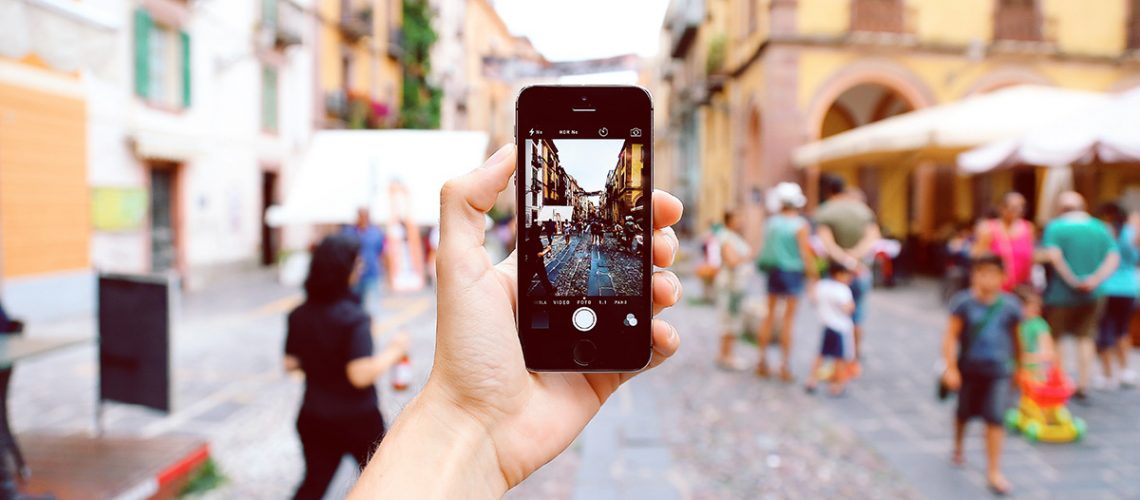Set your goals
As for any other marketing activity, working with influencers also works best if you know what your goals are. As an example, a food brand with a target group of 60-year-olds who have been purchasing the same product for ages will maybe not so much benefit from working with an influencer who targets teenagers on TikTok only. Likewise, a hip, young brand focusing on 20-25-year-olds should probably pick a trendy, modern influencer instead of a 45-year-old mother of three who mainly promotes baking and household tips on her channel.
In order to set the right influencer strategy, you have to know your audience, have a goal for the message you would like to get across and think about what the influencer cooperation should bring you. Do you mainly want to drive sales with a discount code, get new followers via a lottery or create massive reach? Making sure that KPIs are in place before the cooperations even start is important to measure the success of each activity (and influencer!) later on.
Pick the right influencers (in size and focus topic!)
As easy as that sounds, finding the right influencers for long term co-operations can be as hard as finding the right candidate for a new job opening. Depending on which type of influencers a brand would like to work with, there are different ways to do so.
First of all, make sure you pick the right “size”:
= below 10,000 followers. Usually high engagement and happy with a sample package in return for the cooperation. Often not that used to the use of media budget or reportings.
= between 10-40,000 followers. Usually an expert in one or more categories, less engagement compared to Nanos but still very relevant. They are used to brand cooperations and mostly ask for small amounts per post/story.
= above 50,000 followers. Normally focused on one or more topics, professionals in the business, often not cheap but delivering good, reliable results.
= roughly above 1 million followers and a “celebrity” also outside of the Social Media world. Expensive cooperations and usually little engagement by the followers, BUT extremely high reach and awareness as well as an image effect on the cooperating brand.
Second, the topics that an influencer represents should match the topics a food product wants to tackle. A protein bar needs a fitness influencer, a “green” packaging solution could go with a sustainability-driven influencer and an energy drink is maybe best sold by a gamer. Whatever topic is relevant for your brand story, make sure the influencer stands for the same thing.
In order to find out which influencers to work with, there are different options from using a platform (like for example reachhero) to researching and reaching out “by hand” (we usually recommend that
approach for smaller influencers which cannot be found on the more professional platforms).
Manage influencers like any other marketing “activity”
Influencers are often professionals who partly or mainly earn their income through being active on Social Media and receiving payment for their work. Just like in any other channel, advertisement does mostly not come for free. As influencers have their own prices, it is important to communicate openly from the beginning about their as well as the brand’s expectations in order to make the cooperation run smoothly.
If an influencer does not give feedback regarding a request, it usually means they are not interested. Asking one more time and checking in is fine, but otherwise, their lack of interest has to be accepted.
If a brand is newly starting out with influencer marketing, one person should be assigned to researching the matching candidates, reaching out to them and keeping track of the status, the payment and the outcome of the cooperation (which usually starts by sending a contract as well as the first sample package). After a good briefing is sent and the content is produced (and approved by the brand), the influencer should report the outcome of the posting, so that the brand gets an overview of the best and least performing account.
Monitor results and create a long term ambassador programme
Just like the influencer, the food brand working with him or her should also monitor the performance during the cooperation. How was the engagement? Did sales go up with the discount code the influencer promoted? Do new followers stay in your account or do they leave again straight after the promotion is over? All these insights help to
understand the financial and image value of a cooperation.
In order to also decide which influencer should be contacted again for a long term collaboration, we always recommend to validate both the delivered KPIs and financial outcomes, as well as the quality of the cooperation (response time, ease of cooperation, work according to briefing etc.). Working with influencers in the long run is like working with an extended marketing team outside of the company, so it is highly important to have this cooperation run smoothly (also on a teamwork level) in order to create the best results. Never forget: working with
people requires a constant level of motivation!
If you’re having trouble with finding the right influencers for your food brand in the German-speaking market, or simply don’t have the time to deal with this topic, we are happy to hear from you and support you.
You can always reach us via hello@spoonful-solution.com or through the contact page on our website.




